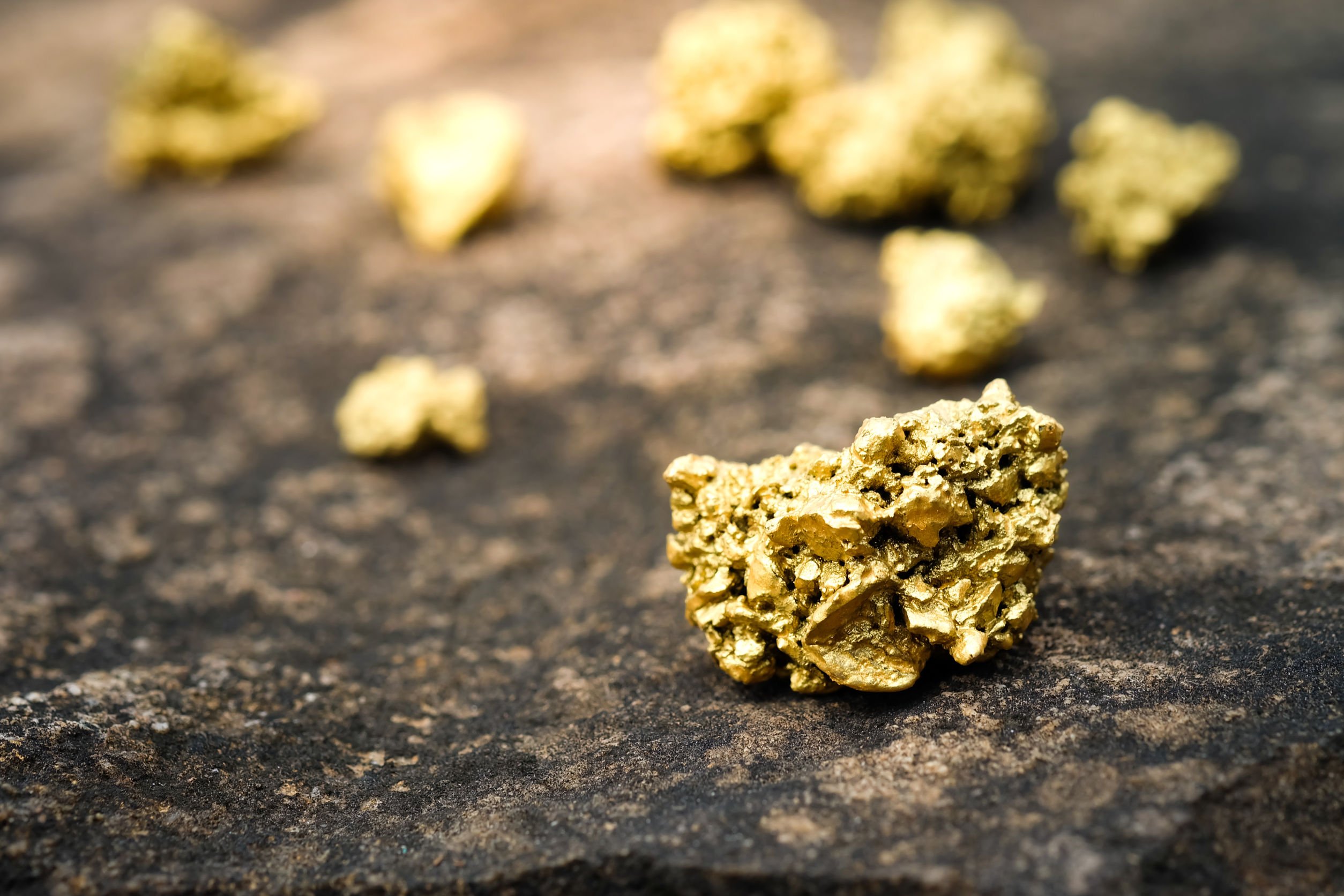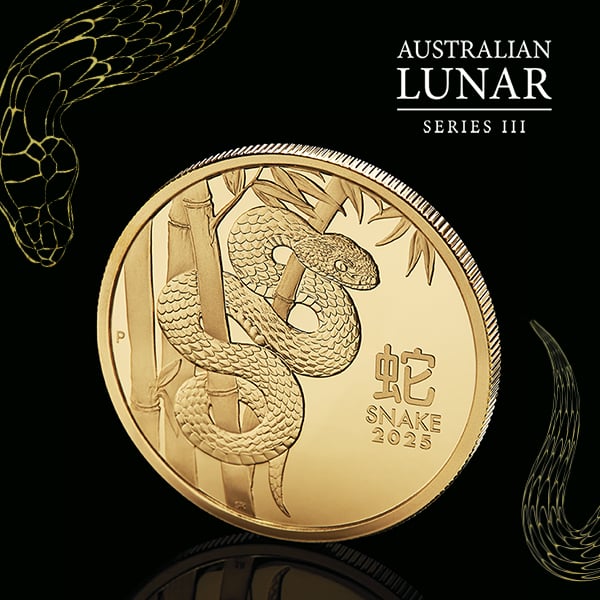When will we hit peak gold?

Dig up that Viking hoard, melt down your wedding ring, strip your phone for its components and empty the vaults — in fact, collect every ounce of gold ever mined and melt it down, and you would still fill only three Olympic swimming pools.
Gold is so scarce that all the gold ever produced would represent a busy afternoon’s work for a commodity like iron ore, but that rarity is essential to its value.
And yet it’s been a long time since a gold rush — there’s been a dearth of discoveries in recent years, and production outputs have been falling.
In 2020, gold mine production reached 3,400 tonnes, four per cent lower than in 2019 and down from the highs of 2018, the year that gold production hit record highs.
The world’s total annual gold supply of 4,633 tonnes, which includes recycled gold, was 4 per cent lower year-on-year, the largest annual fall since 2013.
While December was a better quarter for some countries, including Australia, a combination of tougher environmental rules in some countries and ongoing lockdowns in others, have contributed to lower output.
So will gold production continue to climb on the back of a strong gold price, or have we seen the precious metal reach its peak?
“We know that 2020 was obviously a terrible year for production,” says Manager, Business Development & Industry Research at The Perth Mint, Cameron Alexander.
"COVID had a massive impact on mine closures and globally I think we saw over 100 gold producing mines that were shuttered, at least temporarily."
“I think we can expect to see quite a rebound this year in 2021 and again in 2022, but we are becoming used to seeing more steady growth not big jumps in production.”
When will the world hit ‘peak gold’?
When it comes to the future of gold production, experts talk about the concept of peak gold — when we have mined the most we can in any one year.
There are some who believe we have already crossed that threshold, potentially in 2018, when mine production hit 3,554 tonnes, about 1000 tonnes more than the previous decade’s peak 17 years earlier.
But there have been multiple previous peaks followed by sharp declines, with productions each time climbing back up the charts. Past peaks, including 1912, 1940 and 1970, have seen production stall due to geopolitical challenges, wars and economic downturns.
Hopes of a stronger year for gold mining in 2020 were dashed when the pandemic hit gold production around the world, with outputs battered by lockdowns, although it will be a few months before final production figures are known.
Based on company reporting, Kitco estimates Q2 2020 was the worst quarter for the world’s gold miners in seven years, while the Australian Department of Industry estimates world gold mine production fell 3.4 per cent in the September quarter as well.
It estimates the world’s biggest producer, China, saw a 3 per cent fall in Q3, with environmental regulations limiting gold output, while Russia is estimated to have seen 13 per cent falls.
The World Gold Council estimates around 130 fewer tonnes of gold were produced in the first three quarters.
At the same time, production showed strong recovery in major producers like the US (12 per cent) and Australia (4.8 per cent) and was expected to climb further in Q4 once larger mines reopened.
Looking ahead for the short term, Australia predicts an increase in world mine production in 2021 to roughly 3682 tonnes, which would be about 1 per cent higher than in 2019, with further 2 per cent growth in 2022.
The World Gold Council is similarly bullish, anticipating fewer stoppages due to coronavirus in 2021, as the vaccines are rolled out and as miners implement better and safer protocols to limit spread and disruption.
“I think even if we do see COVID breakout again in some markets, most mines are better positioned in terms of their preparation for taking care of their staff and operations,”
“So, I don’t think we will see the same kind of impact.”
Mr Alexander expects a substantial increase in production this year of 4-5 per cent over 2020’s poor performance, and ongoing growth in 2021, 2022, and 2023.
“It will be more modest at less than one per cent in those outlying years, but it is still growing,” he says.
“At this stage, there’s really no sign we are reaching peak gold.”
The search for the next gold rush
While the peak could be some years off, incremental rises remain more likely than a sharp jump in production.
In part that’s the result of another challenge that could derail the sector — a lack of gold to mine.
S&P Global Market Intelligence tracks ‘major’ gold discoveries over time, describing these as finds of deposits with at least 2 million ounces.
Between 1990 and 2019, there were 278 major gold discoveries that were considered potentially economic to mine. At a nominal price of $1200/oz, S&P suggests those discoveries have a collective worth of more than US$2000 billion, with other metals like copper able to be worked in the same deposits worth about $500 billion.
But the discoveries haven’t been evenly paced.
The 1990s saw 132 deposits identified, an average 13 discoveries a year.
By the first decade of the 2000s, that had fallen to 93 deposits, while in the past decade 25 discoveries in total have been counted, none in the past three years (2).
The last big Australian discovery was in October 2013 at the Gruyere mine, 200 kilometres north-east of Laverton in WA's Great Victoria Desert. Gruyere reached commercial production (1) in 2019.
Before that, it was the 2005 discovery that led to the Tropicana mine north-east of Kalgoorlie, with production taking eight years to begin.
There are hopes for new finds in the Pilbara but it is not yet clear how much gold is represented in the deposits.
“There really haven’t been any substantial announced deposits for some time, but brownfield exploration is ongoing,” Mr Alexander says.
“If you look at Australia, for example, there is a lot of money being spent on exploration at the moment and while the gold price is at record levels, some of those things that we're finding now will come to fore in the next five to ten years. I think we are going to have some production fairly well supported going forward.”
What price makes gold mining viable?
Once the gold is found, of course, there is the matter of extraction.
With an average lead time of 10 years between discovery and production for gold, a dearth of discoveries from 2011 onwards will make it hard for Australian production to remain high at least in the short term.
As discoveries become scarcer, the comparative cost of exploration rises, with the estimated unit discovery cost for gold doubling in the past decade.
The World Gold Council’s forecast for the next 30 years suggests the gold price will need to remain at about $1500/ounce to justify production at the current levels.
Even among the 278 discoveries of the past 30 years, about 135 are not yet in production, S&P says, and the analysis company is bearish about many of those.
Some face a long road to production at best, it says, while others face significant challenges that are likely to stop them progressing.
“With production from existing mines expected to begin decreasing in 2022, there is a need for more high-quality assets that can be developed in the medium term,” it concludes.
While the gold price is high, Mr Alexander expects some production that was shelved at lower prices to come back to the market.
“We are now sitting at such high prices, particularly in Aussie dollars, mines that were sitting derelict or on care and maintenance are being brought back on stream,”
“These mines may be small, but they are more economic at current prices. It is also why we are seeing some consolidation among small producers. By consolidating you can reduce the cost of production on the smaller operations.
“We have also seen the margin that miners are getting in the past year is extraordinary, so they are reinvesting some of that into exploration.”
The other benefit of high prices is an expansion of areas that might be explored.
“There are countries like Egypt, where production has been traditionally small, which are now exploring areas that are under-explored,” he says.
“I think they have huge potential. South America is also seeing an enormous amount of exploration, as is Africa, and there are whole regions that have not typically been big gold producers now looking at what they can find.”
So that’s production, what of demand for gold?
The past year has been a rocky one for gold demand, with consumption of jewellery (which remains about 50 per cent of the market) down in the key markets of China and India. Central banks also sold gold for the first time in a decade, driven by Turkey, Uzbekistan and Russia.
But with the 2020 blip put to one side, gold demand grew 11 per cent between 2010 and 2019. If it were not for recycled or scrap gold, representing about 25 per cent of gold supply, demand would far outweigh supply. As the world’s middle class grows, demand for jewellery is expected to continue to climb, as will the value of gold in savings and investment.
Mr Alexander says that even if production tapers off, the permanence of gold — virtually all ‘above ground’ stocks can be reused over and over — means it can continue to meet consumer, investor and industrial demand.
In other words, production could cease but the world would still not run out of gold.
“We are likely to continue to see production at around the 3300-tonne mark per year but even if that comes off a little bit, it is not going to have a huge impact on what is available to the market,” he says.
“There is a lot of gold sitting in vaults around the world that can be drawn down over time.”
SOURCES:
(1) https://www.australianmining.com.au/news/gruyere-gold-mine-reaches-commercial-production/
(2) https://www.australianmining.com.au/news/major-gold-discoveries-plummet-in-the-past-decade/
https://minerals.org.au/sites/default/files/Rush_Australias_21st_Century_Gold_Industry_FINAL.PDF
https://www.gold.org/goldhub/data/gold-supply-and-demand-statistics
https://www.gold.org/goldhub/research/gold-demand-trends/gold-demand-trends-full-year-2020
https://www.gold.org/goldhub/data/demand-an
https://www.kitco.com/news/2021-01-08/Global-gold-production-in-Q2-2020-was-lowest-in-seven-years.html
https://www.gold.org/goldhub/research/gold-demand-trends/gold-demand-trends-q3-2020
https://www.gold.org/goldhub/research/outlook-2021
https://careers.goldfields.com.au/australian-locations/gruyere-joint-venture/
http://www.tropicanajv.com.au/IRM/content/default.aspx
http://documents1.worldbank.org/curated/en/573121473944783883/pdf/WPS7823.pdf
http://minexconsulting.com/wp-content/uploads/2019/04/NewGenGold-2013-R-Schodde-paper.pdf
https://www.gold.org/goldhub/research/gold-2048-next-30-years-gold
DISCLAIMER
Past performance does not guarantee future results. The information in this article and the links provided are for general information only and should not be taken as constituting professional advice from The Perth Mint. The Perth Mint is not a financial adviser. You should consider seeking independent financial advice to check how the information in this article relates to your unique circumstances. All data, including prices, quotes, valuations and statistics included have been obtained from sources The Perth Mint deems to be reliable, but we do not guarantee their accuracy or completeness. The Perth Mint is not liable for any loss caused, whether due to negligence or otherwise, arising from the use of, or reliance on, the information provided directly or indirectly, by use of this article.











